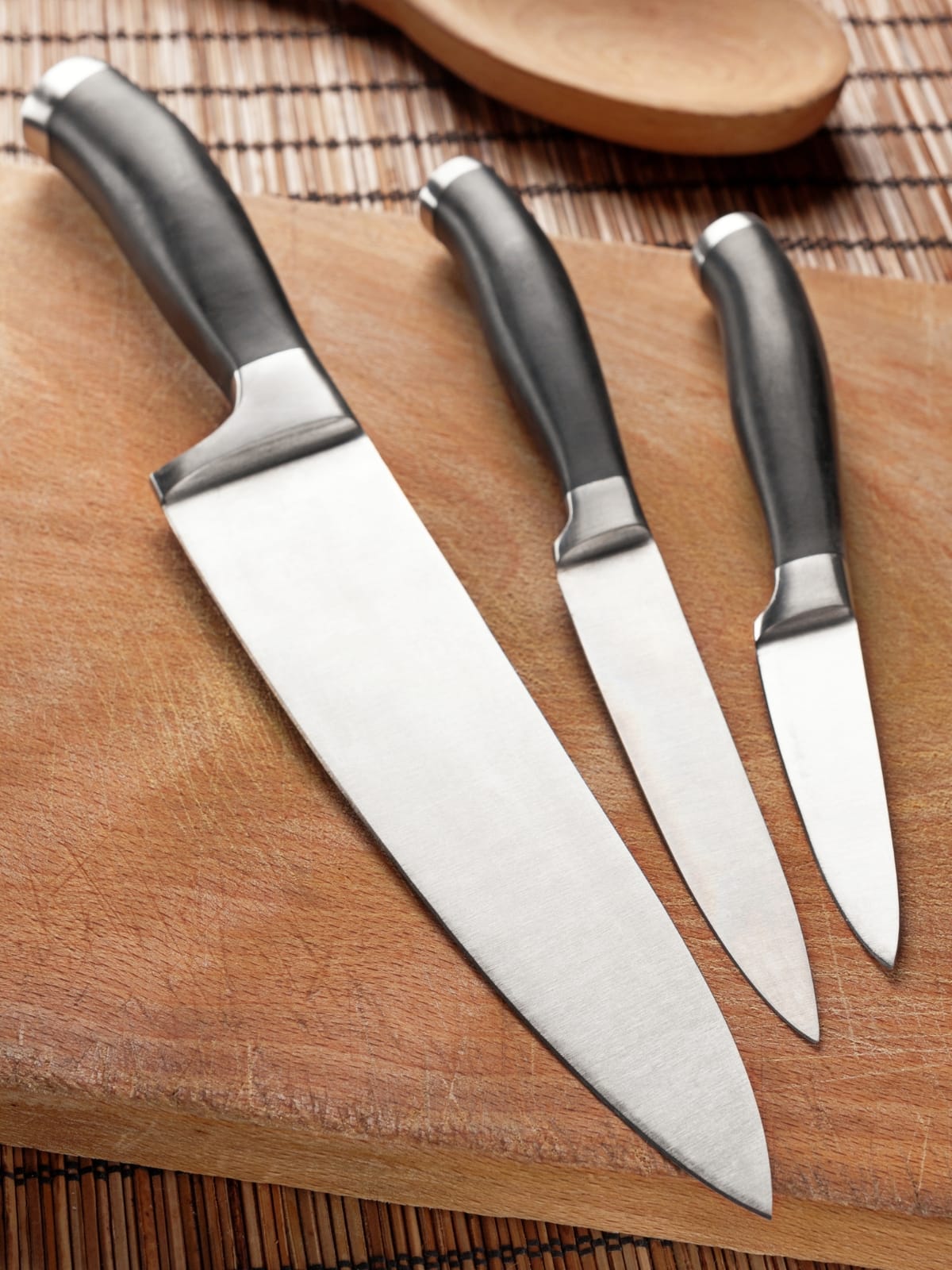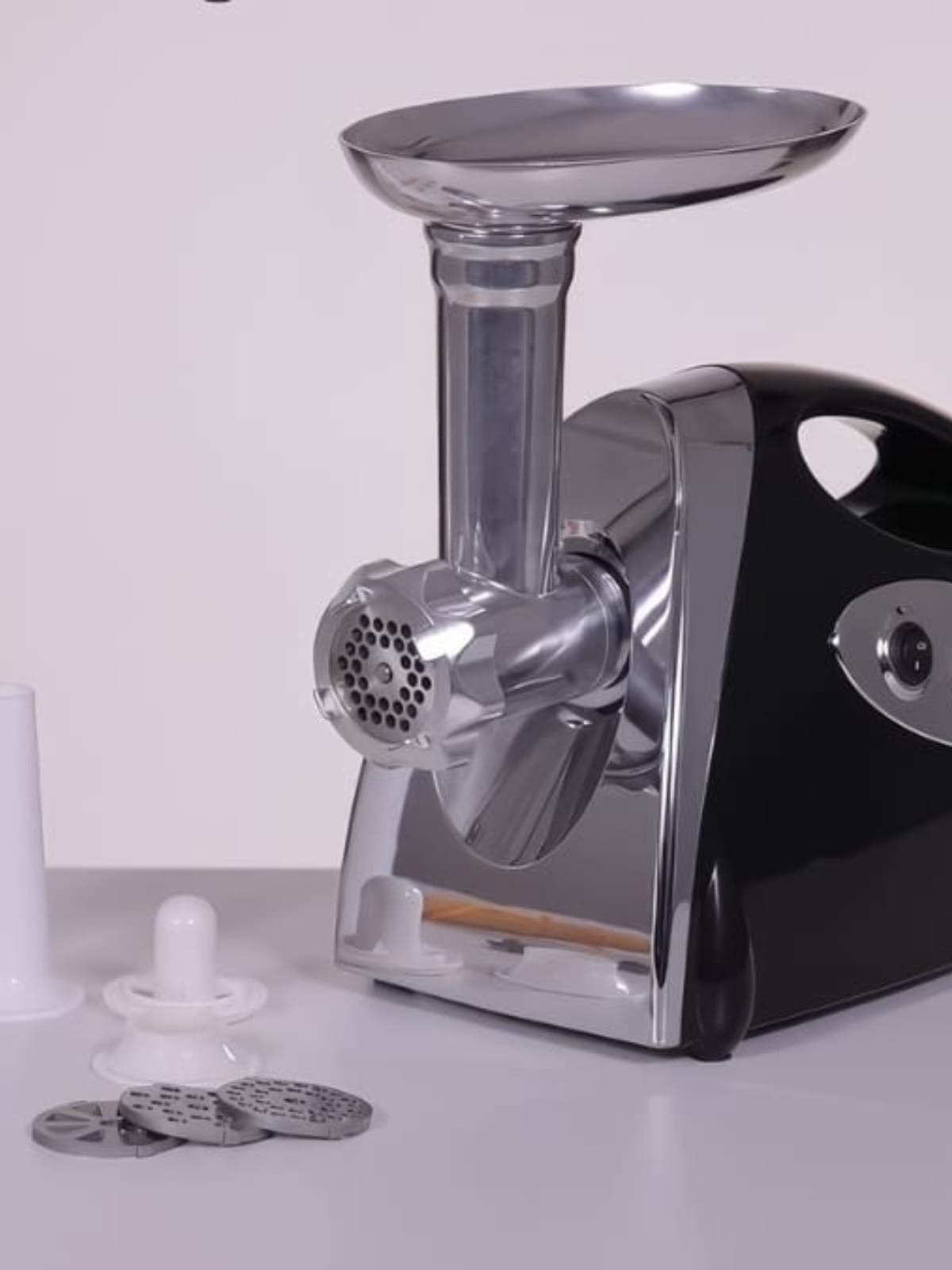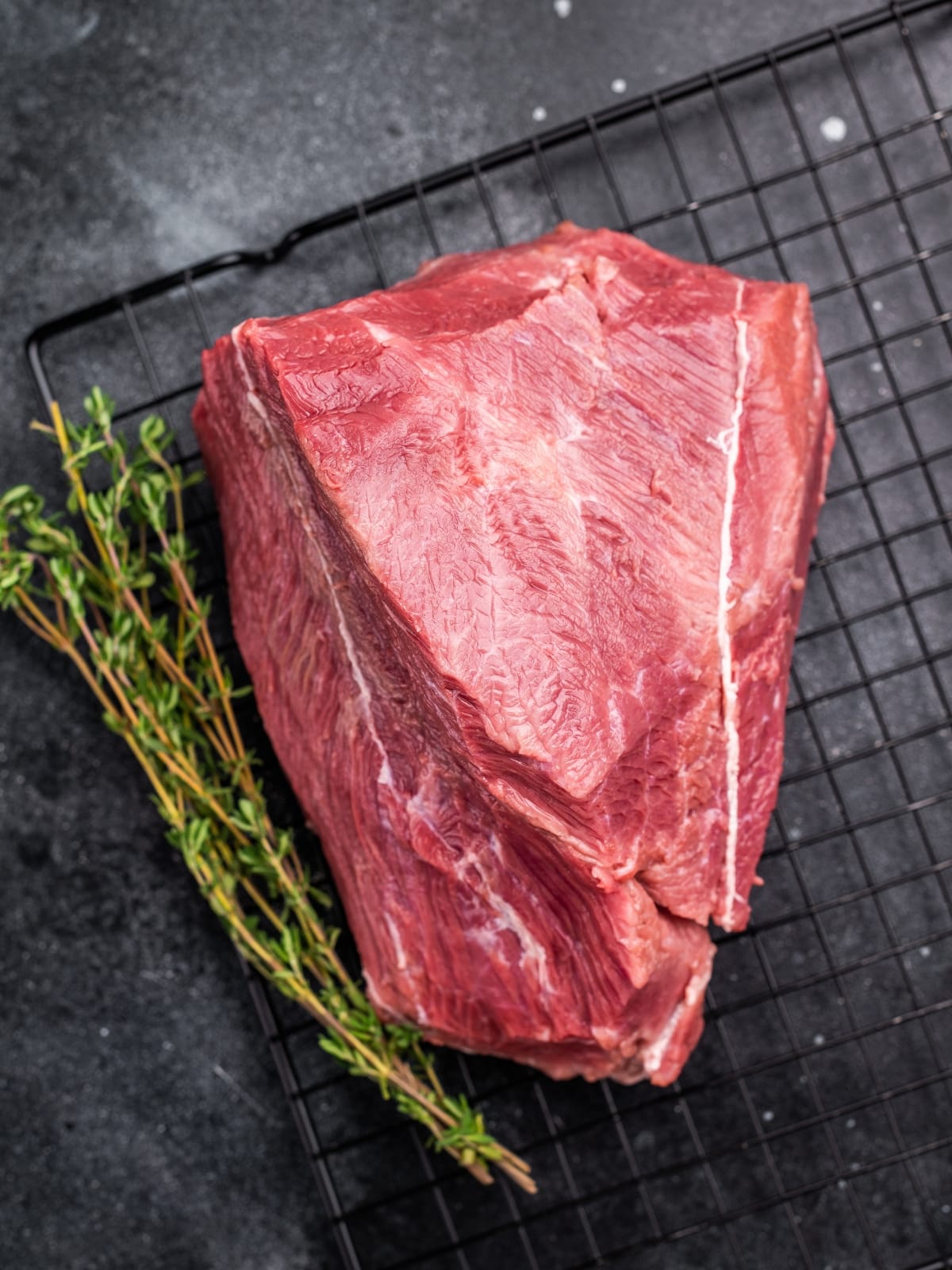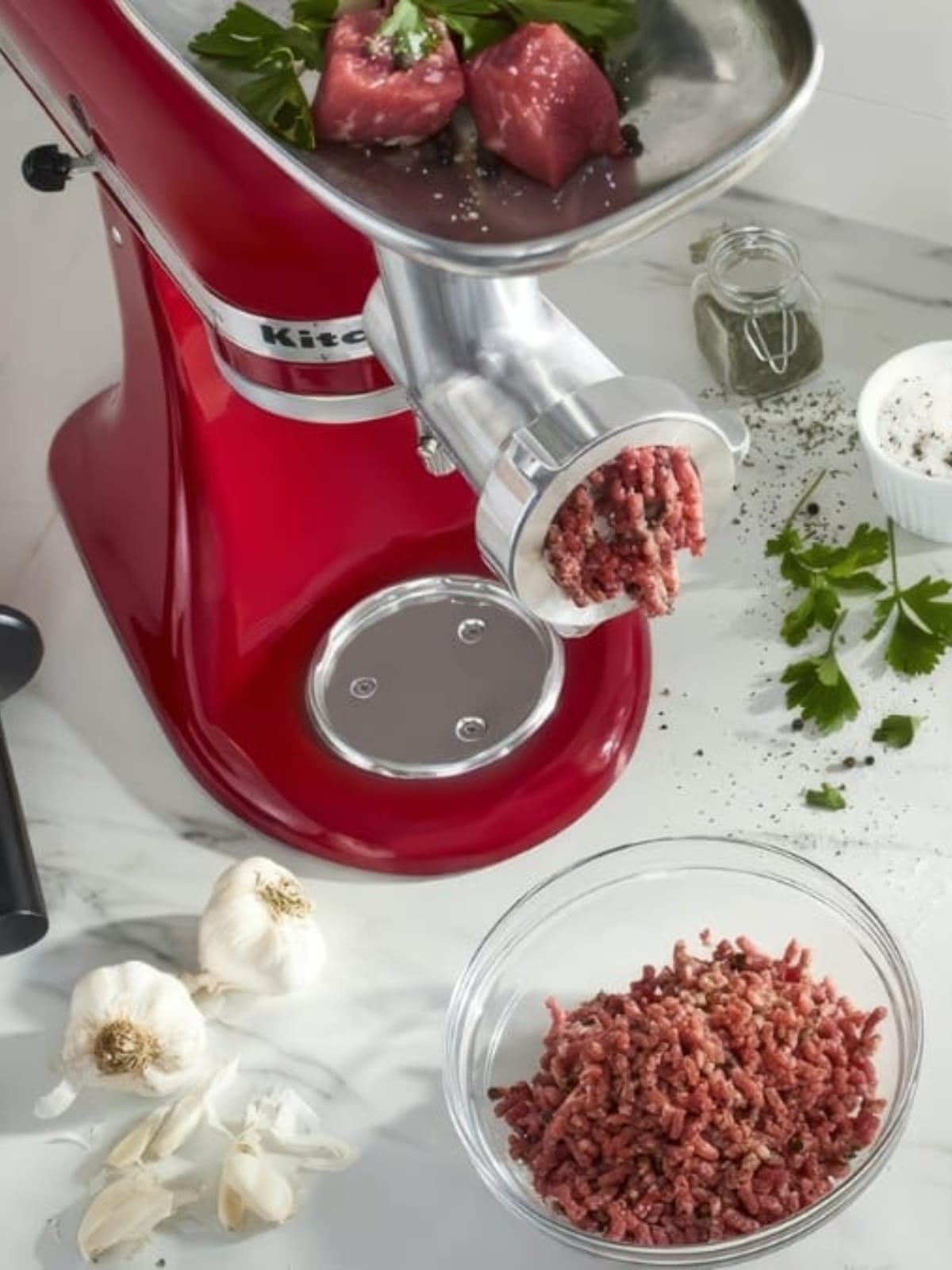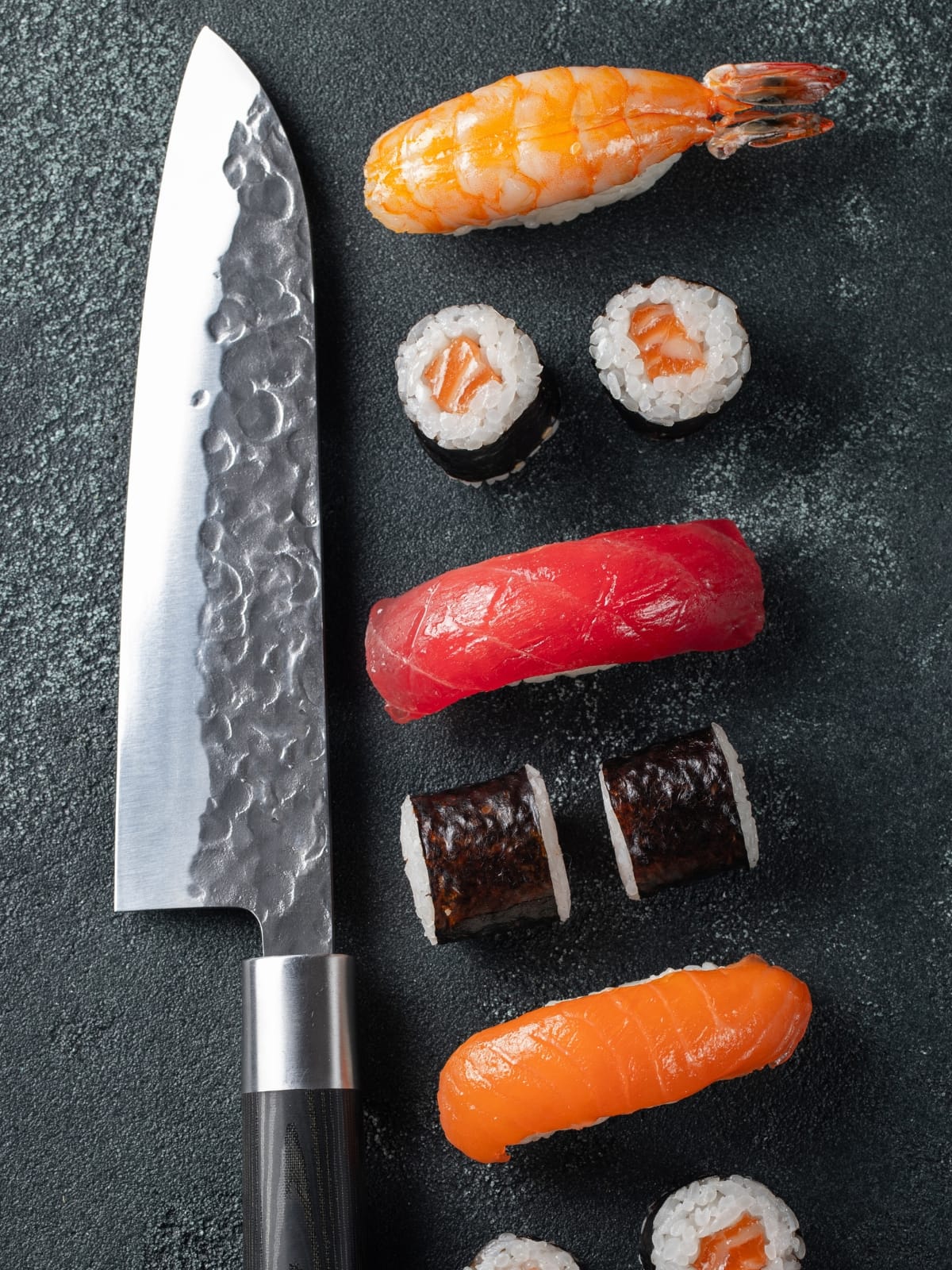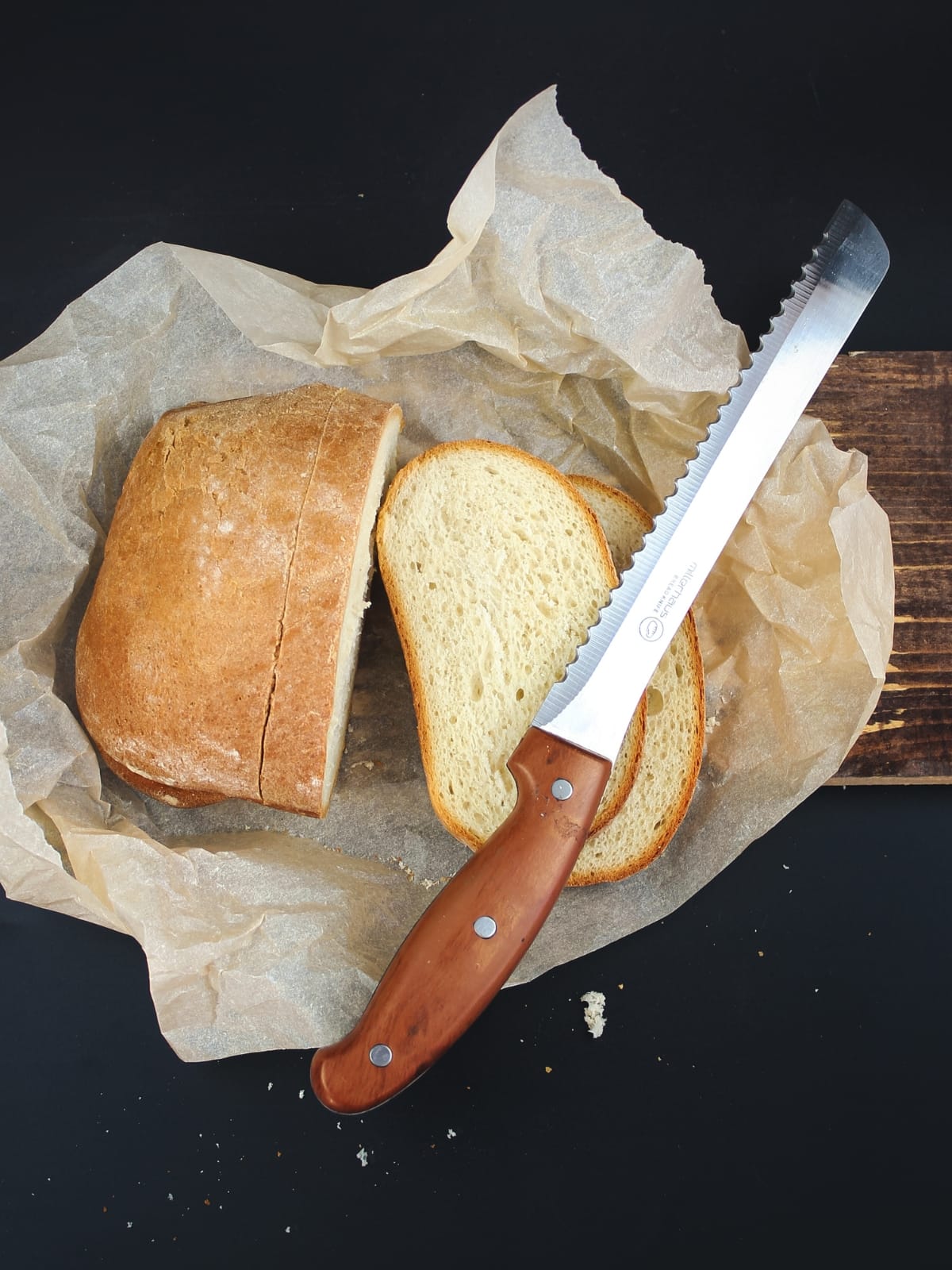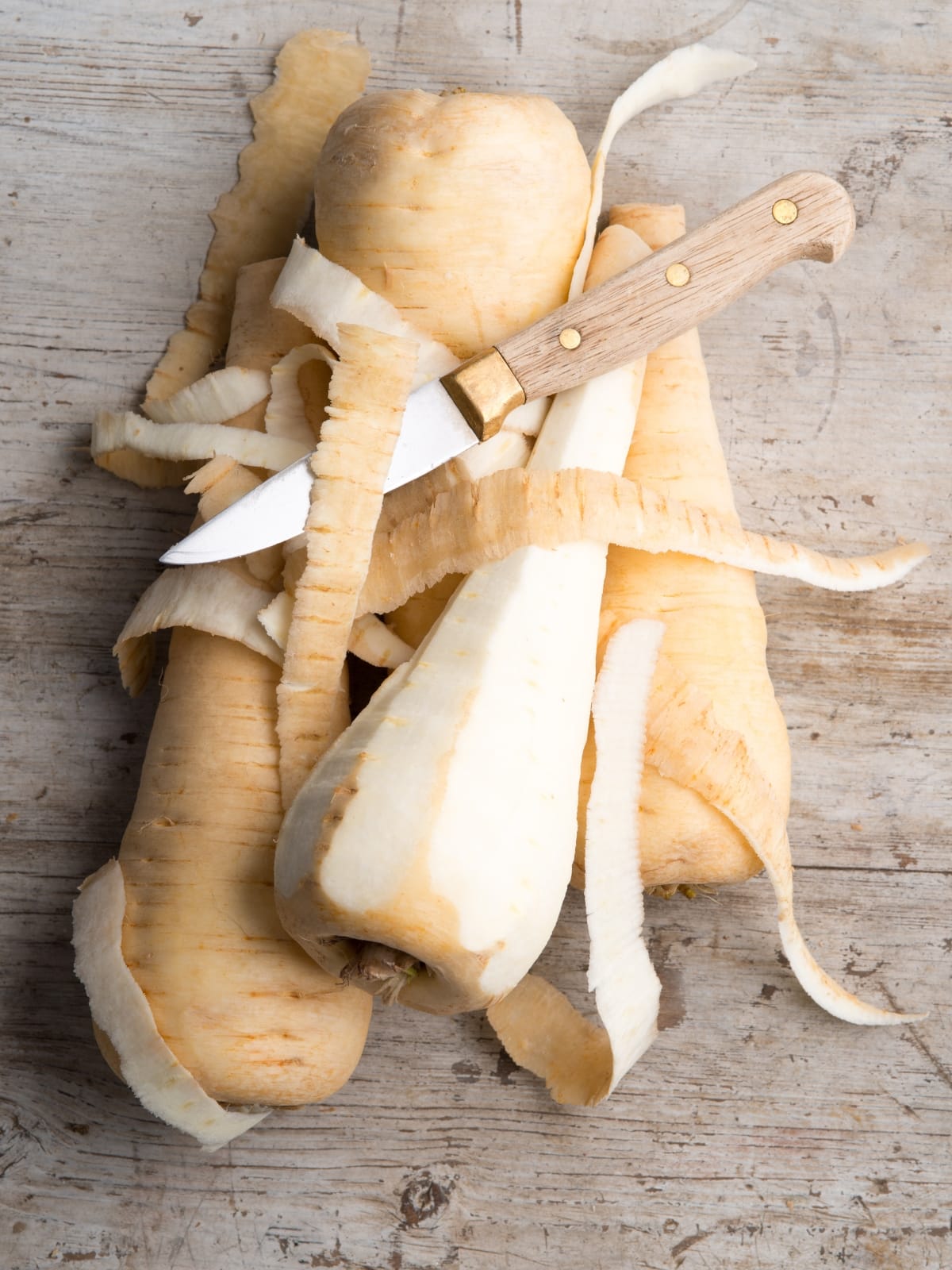When it comes to essential kitchen tools, a good chef’s knife is a must-have. But with so many sizes available, it can be tricky to know which dimensions suit your needs. In this comprehensive guide, we’ll explore the average kitchen knife dimensions, focusing on the versatile chef’s knife, to help you find the perfect fit for your culinary adventures.
Understanding Chef’s Knife Dimensions

Blade Length
Chef’s knives come in several standard blade lengths, including 6, 8, 10, and 12 inches. The most common sizes are 8 and 10 inches, as they offer a balance between control and versatility. Here’s a breakdown of each size:
- 6-inch chef’s knife: Perfect for small hands or precise tasks like mincing garlic or peeling vegetables. It’s also ideal for working in tight spaces or for those who prefer a more maneuverable blade.
- 8-inch chef’s knife: The most popular size, an 8-inch blade is suitable for the majority of kitchen tasks. It provides a good balance between precision and power, making it a versatile choice for home cooks and professionals alike.
- 10-inch chef’s knife: Preferred by many professional chefs, a 10-inch blade offers more cutting power and efficiency, especially when dealing with larger ingredients or higher volume. However, it may feel unwieldy for some users with smaller hands.
- 12-inch chef’s knife: This size is less common and mainly used by professional chefs who require the extra length for specific tasks or high-volume cutting. A 12-inch blade can be challenging to control for most home cooks.
When choosing a blade length, consider factors such as your hand size, cutting style, and the types of ingredients you typically work with. A longer blade can handle larger items more efficiently but may sacrifice some precision. Conversely, a shorter blade offers more control but may require more strokes to cut through bigger ingredients.
Handle Length
The length of a chef’s knife handle is another important dimension to consider. The average handle length for a chef’s knife ranges from 4 to 6 inches, depending on the overall size of the knife and the manufacturer’s design.
A comfortable handle length allows for a secure grip and proper balance, reducing fatigue during extended cutting sessions. If the handle is too short, your hand may feel cramped, while an overly long handle can throw off the knife’s balance and control.
When choosing a chef’s knife, make sure the handle length accommodates your hand size comfortably. If possible, hold the knife in your hand before purchasing to ensure a good fit. Some manufacturers offer knives with varying handle lengths to cater to different hand sizes and preferences.
Choosing the Right Chef’s Knife Size
8-Inch Chef’s Knife
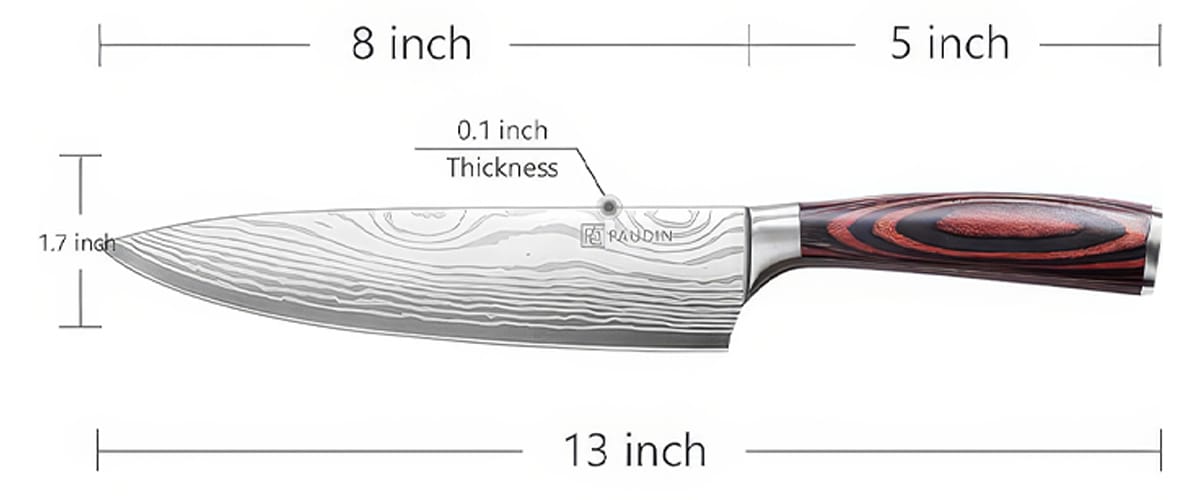
The 8-inch chef’s knife is widely considered the most versatile and popular size for both home cooks and professionals. Its mid-range length offers a balance of control and cutting power, making it suitable for a wide variety of kitchen tasks.
Advantages of an 8-inch chef’s knife:
- Versatile enough to handle most cutting tasks, from mincing garlic to slicing meats
- Provides good leverage for chopping through tougher ingredients
- Offers a comfortable grip for most hand sizes
- Easily maneuverable on average-sized cutting boards
An 8-inch chef’s knife is an excellent choice for those who want a single, go-to knife that can handle the majority of their kitchen needs. It’s also a great option for those who are new to using chef’s knives, as it provides a manageable size for learning proper cutting techniques.
10-Inch Chef’s Knife
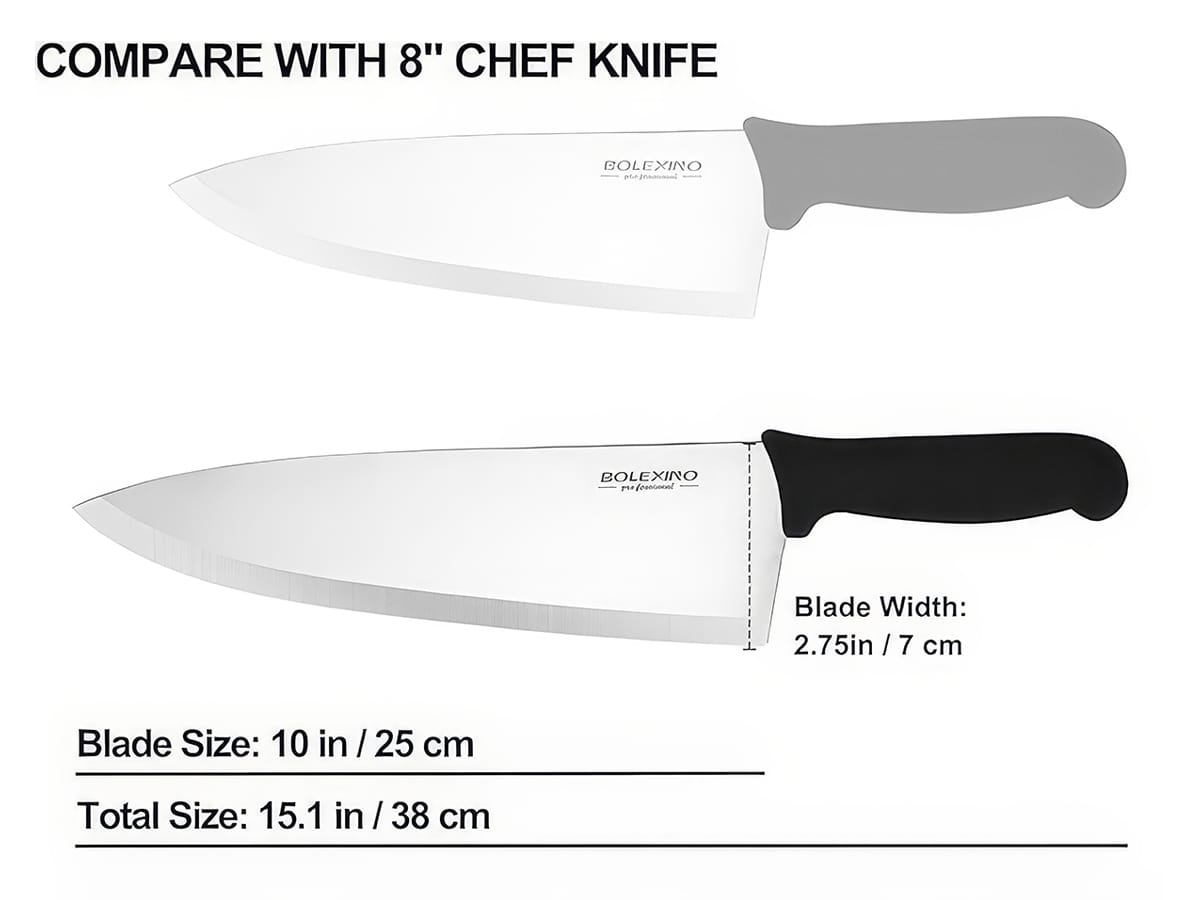
The 10-inch chef’s knife is a favorite among professional chefs and serious home cooks who appreciate its increased cutting power and efficiency. The longer blade allows for more cutting edge to work with, making it ideal for processing larger ingredients or higher volumes of food.
Advantages of a 10-inch chef’s knife:
- Provides more cutting power and leverage for tougher ingredients
- Covers more surface area with each slice, speeding up cutting tasks
- Ideal for larger hands or those who prefer a roomier grip
- Well-suited for cutting larger items like watermelons or thick cuts of meat
However, a 10-inch blade may feel unwieldy for some users, particularly those with smaller hands or less experience handling larger knives. It can also be more challenging to maneuver on smaller cutting boards or in tight kitchen spaces.
If you have larger hands, frequently work with bigger ingredients, or simply prefer the added power and efficiency of a longer blade, a 10-inch chef’s knife may be the perfect fit for you.
6-Inch Chef’s Knife
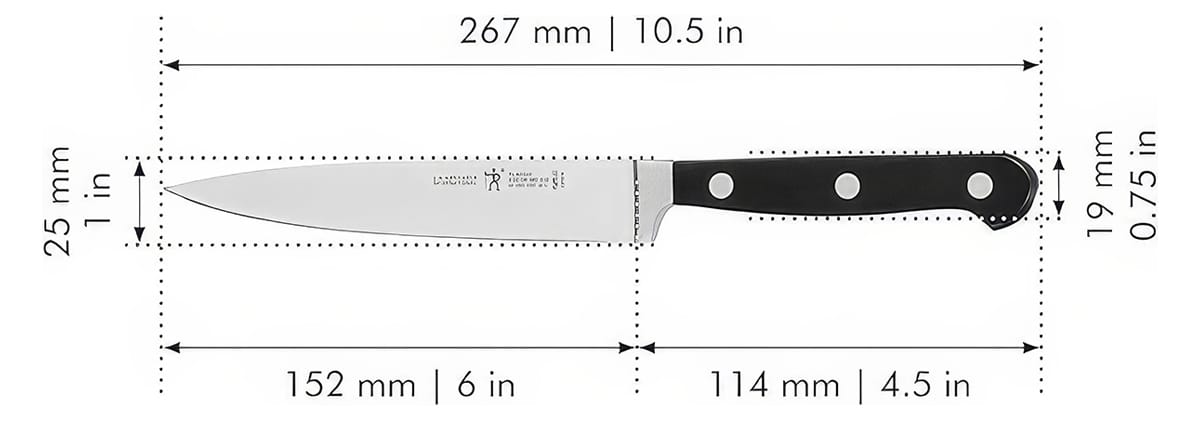
The 6-inch chef’s knife is the smallest of the common chef’s knife sizes. While it may not be as versatile as its larger counterparts, it excels at precision tasks and is a favorite among those with smaller hands or those who work in tight kitchen spaces.
Advantages of a 6-inch chef’s knife:
- Offers excellent control and maneuverability for precise cutting tasks
- Ideal for smaller hands or those who prefer a more compact grip
- Perfect for working with smaller ingredients or in tight spaces
- Excels at tasks like peeling, paring, and trimming
A 6-inch chef’s knife can be a valuable addition to any kitchen, particularly for those who frequently perform precise cutting tasks or have limited workspace. It’s also a good option for those who find larger chef’s knives intimidating or uncomfortable to use.
| 8-inch Chef’s Knife | 10-inch Chef’s Knife | 6-inch Chef’s Knife | |
|---|---|---|---|
| Blade Length | 8 inches | 10 inches | 6 inches |
| Handle Length | 4.5-5 inches | 5-5.5 inches | 4-4.5 inches |
| Overall Length | 12.5-13 inches | 15-15.5 inches | 10-10.5 inches |
| Best For | Versatile use Most hand sizes Everyday cutting tasks | Large ingredients High-volume cutting Experienced cooks | Precision tasks Small ingredients Compact kitchens |
When choosing the right chef’s knife size, consider your personal preferences, hand size, cutting style, and the types of tasks you perform most often. Don’t be afraid to experiment with different sizes to find the one that feels most natural and comfortable for you. Remember, the best chef’s knife is the one that enhances your cooking experience and helps you work more efficiently and enjoyably in the kitchen.
To learn more about the fascinating world of kitchen knives and elevate your culinary skills, visit our homepage for a wealth of informative articles and resources.
Caring for Your Chef’s Knife
Proper care and maintenance are essential for ensuring your chef’s knife performs at its best and lasts for years, regardless of its size. Here are some key aspects:
Proper Storage
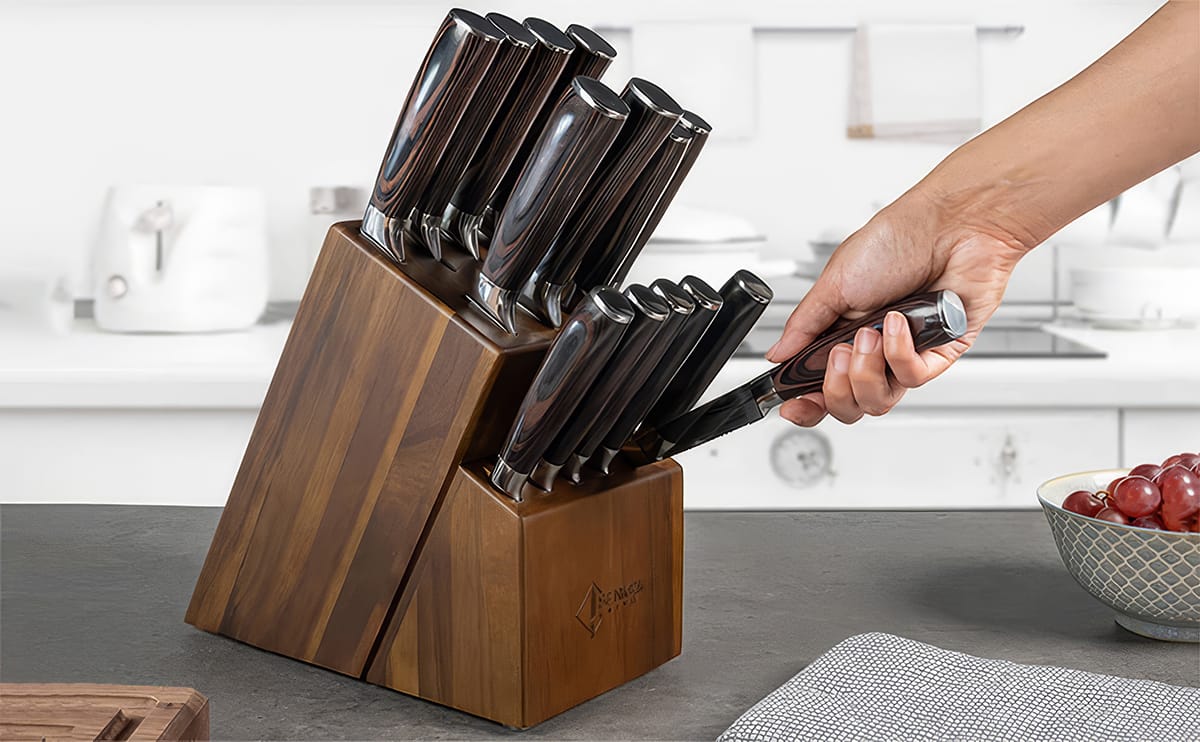
Store your chef’s knife correctly to prevent damage and ensure accessibility:
- Knife blocks: Choose a wooden block with appropriately sized slots for your chef’s knife.
- Magnetic knife strips: Wall-mounted strips save space and keep knives visible and within reach.
- Knife sheaths: Individual sheaths or blade guards protect knives in drawers or during transport.
Always ensure your chef’s knife is clean and dry before storing to prevent rust and corrosion.
Regular Sharpening
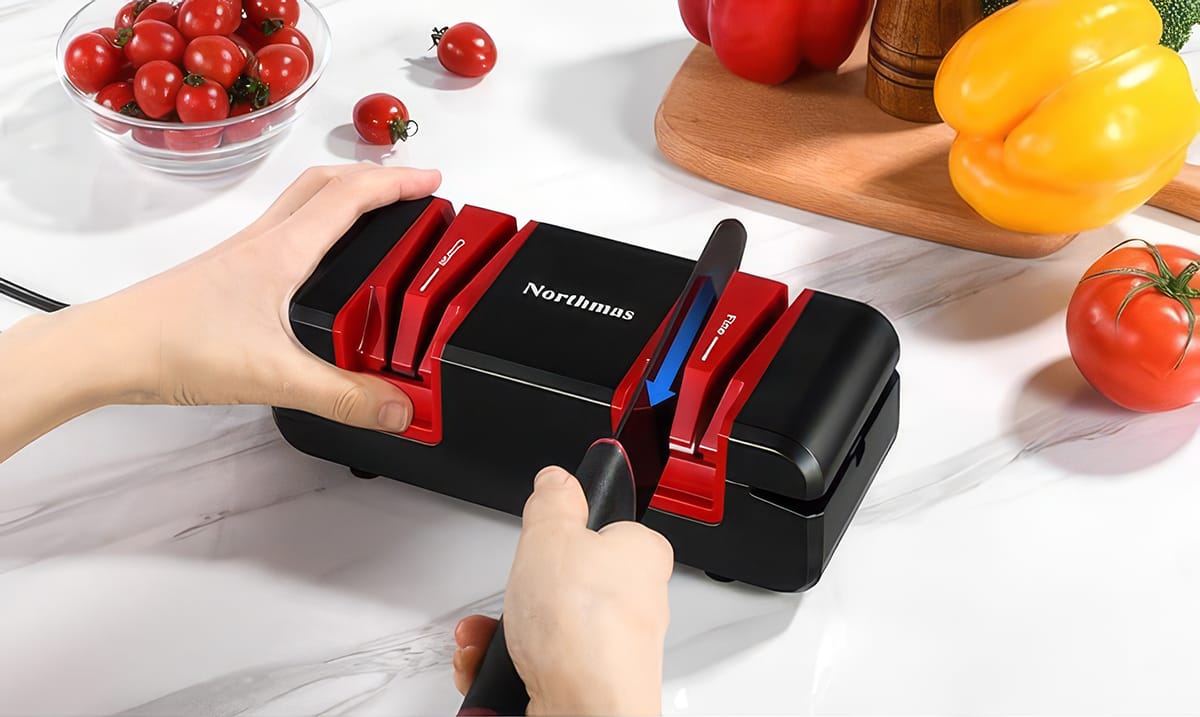
A sharp chef’s knife performs better and is safer to use. Regular sharpening maintains the blade’s edge and ensures precise cuts:
- Whetstone: Traditional and effective, requires skill and practice. Learn more from Serious Eats.
- Honing steel: Realigns the edge between full sharpenings. Use before each use.
- Electric knife sharpener: Quick and easy, but may remove more blade material than manual methods.
Sharpen your knife every few months or whenever you notice a decline in performance.
Cleaning and Maintenance
Proper cleaning and maintenance extend the life of your chef’s knife:
- Hand wash only with warm, soapy water immediately after use. Avoid the dishwasher.
- Dry thoroughly with a clean towel to prevent rust and corrosion. Store only when fully dry.
- Cut only on appropriate surfaces like wood or plastic. Avoid hard surfaces that can dull or damage the blade.
- Occasionally apply a thin layer of food-grade mineral oil to the blade to protect against rust and corrosion.
By following these care guidelines, you can ensure your chef’s knife remains a reliable tool in your kitchen for years, no matter what size you choose.
FAQs
What is the best chef’s knife size for a beginner?
For beginners, an 8-inch blade is recommended as it offers a balance of control and versatility, allowing you to develop proper cutting techniques and handle various kitchen tasks. As you gain experience, you may find a different size suits your preferences better.
How do I know if a chef’s knife fits my hand?
To determine if a chef’s knife fits your hand:
- Grip the knife as you would when cutting, with your index finger and thumb pinching the blade just in front of the bolster, and your remaining fingers wrapped around the handle.
- The knife should feel balanced and comfortable, with no strain on your wrist or hand.
- If possible, try mimicking a few cutting motions to gauge how the knife feels in action.
Can I use a chef’s knife for all my cutting needs?
While a chef’s knife is versatile, some specialized tasks (e.g., boning meat, peeling vegetables, or making intricate cuts) may be better suited to other knife types like boning knives, paring knives, or utility knives. However, a well-chosen chef’s knife can handle most everyday cutting needs.
How much should I spend on a chef’s knife?
Look for a reputable brand that offers a balance of quality materials, craftsmanship, and value within your budget. A good chef’s knife is an investment that can last for years with proper care and maintenance.
What is the difference between German and Japanese chef’s knives?
German chef’s knives:
- Known for durability and versatility
- Thicker, heavier blades with a more pronounced curve
- Well-suited for a rocking motion when chopping and handling tougher cutting tasks
- Popular brands: Wüsthof, Zwilling J.A. Henckels, Messermeister
Japanese chef’s knives:
- Known for precision and sharpness
- Thinner, lighter blades with a straighter edge
- Ideal for precise slicing and push-cutting techniques
- Popular styles: gyuto, santoku, nakiri
- Notable brands: Shun, Global, MAC
The choice between German and Japanese chef’s knives comes down to personal preference and cutting style.
Conclusion
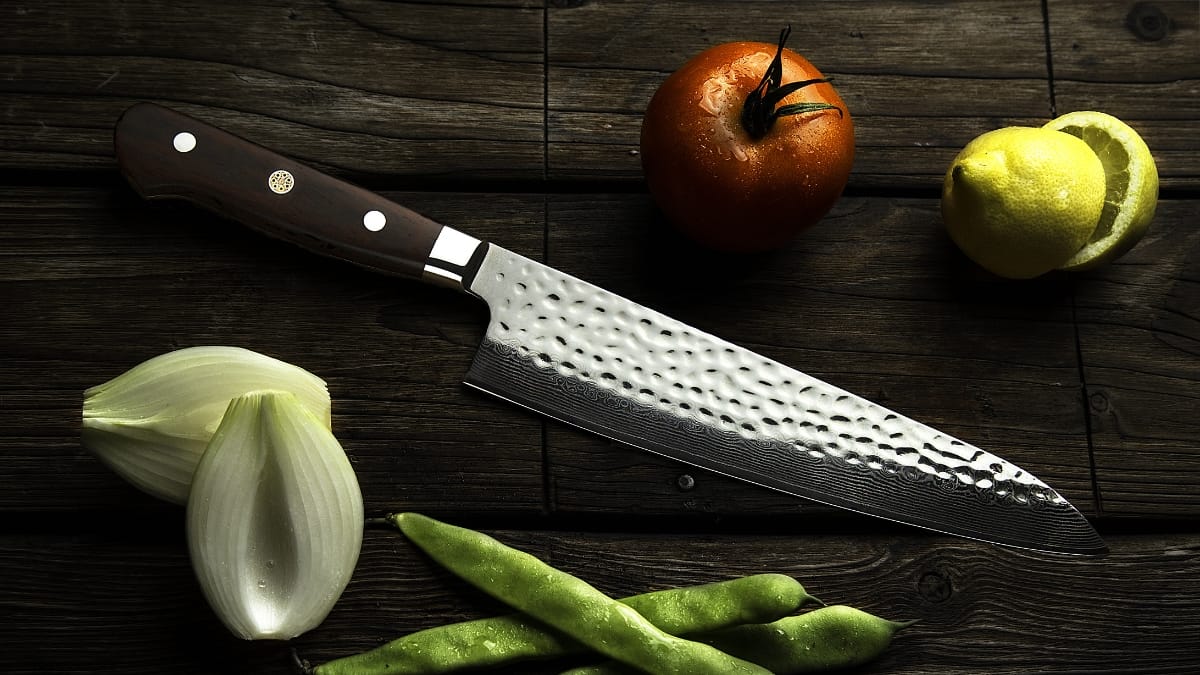
Choosing the right chef’s knife size is crucial for optimizing your kitchen experience and elevating your cooking skills. By understanding the factors that influence size preference and the benefits of each common size, you can make an informed decision that best suits your needs. Remember to experiment with different sizes and styles until you find the perfect fit, and once you’ve found your ideal chef’s knife, care for it properly with regular sharpening, cleaning, and storage for years of reliable performance.
